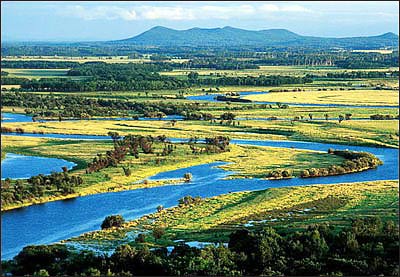China has 65.94 million ha of wetlands, 36.20 million ha of
which are natural wetlands, ranking first in Asia and fourth in the
world.
 |
Widely distributed across China and widely varied, China's
wetlands fall into 31 different types and 9 categories. China's
range of wetland types is among the widest in the world. Since
joining the Ramsar Convention on Wetlands in 1992, the government
has established 535 natural wetland reserves, many are low beaches
by seas, lakes, rivers and forest-margin wetlands; of these 30,
with a total area of 3.43 million ha, have been classified as
Wetlands of International Importance, thus 40 percent of natural
wetlands and 33 key animals under state protection are effectively
preserved within the nature reserves. Thanks to effective
protection the Lalu Wetland in Lhasa, Tibet, the world's highest,
largest natural wetland within a city, has stopped shrinking,
expanding from less than 6 sq km at the end of the millennium to
6.2 sq km today. Its vegetation coverage, most of it grassy marsh,
is over 95 percent.
The National Plan for Wetland Protection Action begun in
November 2000 aims to stop human-activity-related shrinking of
natural wetlands by 2010 and to the recovery of receding or
vanished wetlands by 2020. The National Program for Wetland
Protection Engineering approved by the State Council in 2003 set
these goals: by 2030, China will have 713 wetland reserves,
including 80 Wetlands of International Importance, with over 90
percent of natural wetlands effectively protected; at the same
time, 1.4 million ha of wetlands will be restored, and 53 national
model zones of wetland protection and proper exploitation will be
built, forming a relatively complete system of wetland protection,
management and construction.